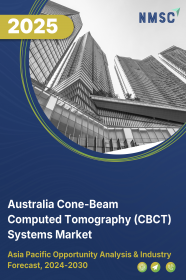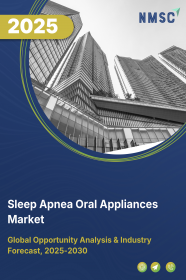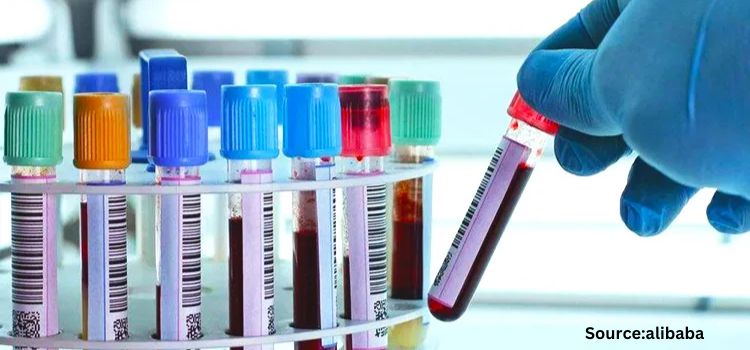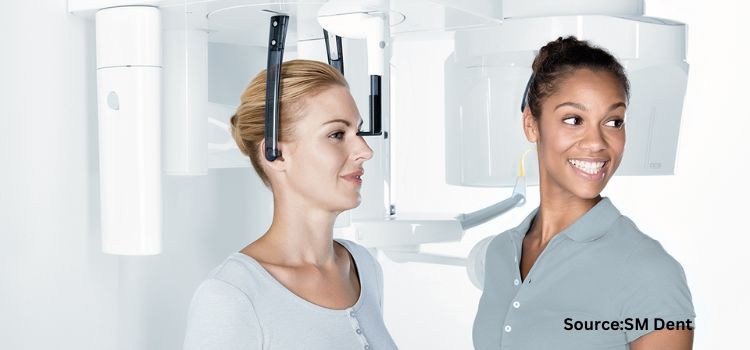
Australia Cone-Beam Computed Tomography (CBCT) Systems Market by Type (Floor Mounted and Wall Mounted), by Patient Position (Seated, Supine, and Standing), by Detector Type (Image Intensifier and Flat-Panel Detector), by Field of View (Small FOV Systems, Medium FOV Systems, and Large FOV Systems), by Application (Dental, ENT Applications, Orthopedic Conditions, and Others), and by End-Users (Dental Clinics, Hospitals, and Others)– Opportunity Analysis and Industry Forecast, 2025–2030
Industry: Healthcare | Publish Date: 14-Apr-2025 | No of Pages: 127 | No. of Tables: 93 | No. of Figures: 58 | Format: PDF | Report Code : HC826
US Tariff Impact on Australia Cone-Beam Computed Tomography (CBCT) Systems Market
Trump Tariffs Are Reshaping Global Business
Australia CBCT Systems Market Overview
Australia CBCT Systems Market size was valued at USD 30.2 million in 2024, and is projected to reach to USD 34.9 million by 2030, with a CAGR of 1.1%. In terms of volume, the market size was 372 units in 2024, and is projected to reach 490 units by 2030, with a CAGR of 3.3% from 2025 to 2030.
Several factors such as Rising Oral Health Issues along with Increasing Government Initiatives propel CBCT market growth. However, conflict with economic conditions across various regions in Australia limit access to CBCT technology, particularly in rural areas. On the contrary, integration of artificial intelligence (AI) in CBCT systems presents lucrative opportunity for market expansion.
Moreover, leading firms such as Vatech Company Ltd. along with Carestream Dental, Koninklijke Philips N.V., 3Shape and J. Morita Mfg. Corporation are consistently developing new products and establishing strategic partnerships across different sectors to improve their growth in the market.
Rising Oral Health Issues Drives Australia CBCT Systems Market Growth
The increasing oral health issues in the country drives the market trends, as the growing occurrence of dental conditions elevates the demand for accurate diagnostic tools. With the rise in gum infections, tooth decay and implant needs, medical professionals are adopting advanced imaging technologies for better diagnostics and treatment.
The recent report from the Broadcasting Corporation shows that in 2023 Australia saw more than 87,000 hospital admissions related to dental issues. So, the increasing concerns about dental health are driving the need for advanced imaging technologies that leads to a faster uptake of the market.
Increasing Government Initiatives Drives the Australia CBCT Systems Market Demand
Government funding in Australia drives the expansion of the CBCT market by enhancing expenditures in healthcare, research, infrastructure and the implementation of advanced diagnostic technologies. As governments prioritize healthcare modernization, investments in advanced imaging systems including CBCT are helping on diagnostic accuracy and patient care.
As per the latest report published by the Department of Health and Aged Care of the Australian Government, they announced an USD 7.86 billion investment toward strengthening healthcare, allocated across the 2022-2025 budgets. These investments are boosting the acquisition of advanced imaging solutions that enhances healthcare infrastructure and also improving treatment planning, diagnostic accuracy and medical treatment.
Variability In Economic Conditions Limits the Australia CBCT Systems Market Expansion
Variability in economic conditions across different regions in Australia restricts access to CBCT technology, especially in rural areas, where financial limitations and lower demand make it challenging for healthcare providers to invest in and maintain these advanced imaging systems.
Integration of Artificial Intelligence (AI) in CBCT Systems Presents Lucrative Opportunity for Market Expansion
The introduction of artificial intelligence (AI) in CBCT market is anticipated to produce significant opportunities for market growth by enhancing diagnostic accuracy. AI algorithms streamline the analysis of imaging data allowing for quicker identification of deformity and alleviating the workload of health professionals which overall improves patient outcomes and heightens the adoption rates.
Additionally, the use of machine learning for image optimization and predictive analysis is expected to simplify the workflows reducing the need for manual intervention, and enhancing the overall effectiveness of CBCT imaging across different healthcare applications.
Competitive Landscape
The promising key players operating in the Australia CBCT systems industry includes Vatech Co., Ltd., Carestream Dental, Koninklijke Philips N.V., Acteon Group, J. Morita Mfg. Corp., Dentsply Sirona Inc., HDX WILL, CurveBeam AI, DEXIS LLC, 3Shape and others.
Australia CBCT Systems Market Key Segments
By Type
-
Floor Mounted
-
Wall Mounted
By Patient Position
-
Seated
-
Supine
-
Standing
By Detector Type
-
Image Intensifier
-
Flat-Panel Detector
By Field of View
-
Small FOV Systems
-
Medium FOV Systems
-
Large FOV Systems
By Applications
-
Dental
-
Oral and Maxillofacial surgery (OMFS)
-
Endodontics
-
Implant Dentistry
-
Orthodontics
-
General Dentistry
-
Temporomandibular Joint (TMJ)
-
Periodontics
-
Forensic Dentistry
-
-
ENT Applications
-
Orthopedic Conditions
-
Neural and Spine
-
Veterinary
-
Other Application
By End-Users
-
Dental Clinics
-
Hospitals
-
Other End-User
Key Players
-
Vatech Co., Ltd.
-
Carestream Dental
-
Koninklijke Philips N.V.
-
Acteon Group
-
J. Morita Mfg. Corp.
-
Dentsply Sirona Inc.
-
HDX WILL
-
CurveBeam AI
-
DEXIS LLC
-
3Shape
REPORT SCOPE AND SEGMENTATION:
|
Parameters |
Details |
|
Market Size Value in 2024 |
USD 30.2 million |
|
Revenue Forecast in 2030 |
USD 34.9 million |
|
Value Growth Rate |
CAGR of 1.1% from 2025 to 2030 |
|
Market Volume in 2024 |
372 Units |
|
Market Forecast in 2030 |
490 Units |
|
Volume Growth Rate |
CAGR of 3.3% from 2025 to 2030 |
|
Analysis Period |
2024–2030 |
|
Base Year Considered |
2024 |
|
Forecast Period |
2025–2030 |
|
Market Size Estimation |
Million (USD) |
|
Growth Factors |
|
|
Companies Profiled |
10 |
|
Market Share |
Available for 10 companies |
|
Customization Scope |
Free customization (equivalent up to 80 working hours of analysts) after purchase. Addition or alteration to country, regional, and segment scope. |
|
Pricing and Purchase Options |
Avail customized purchase options to meet your exact research needs. |

















 Speak to Our Analyst
Speak to Our Analyst





















